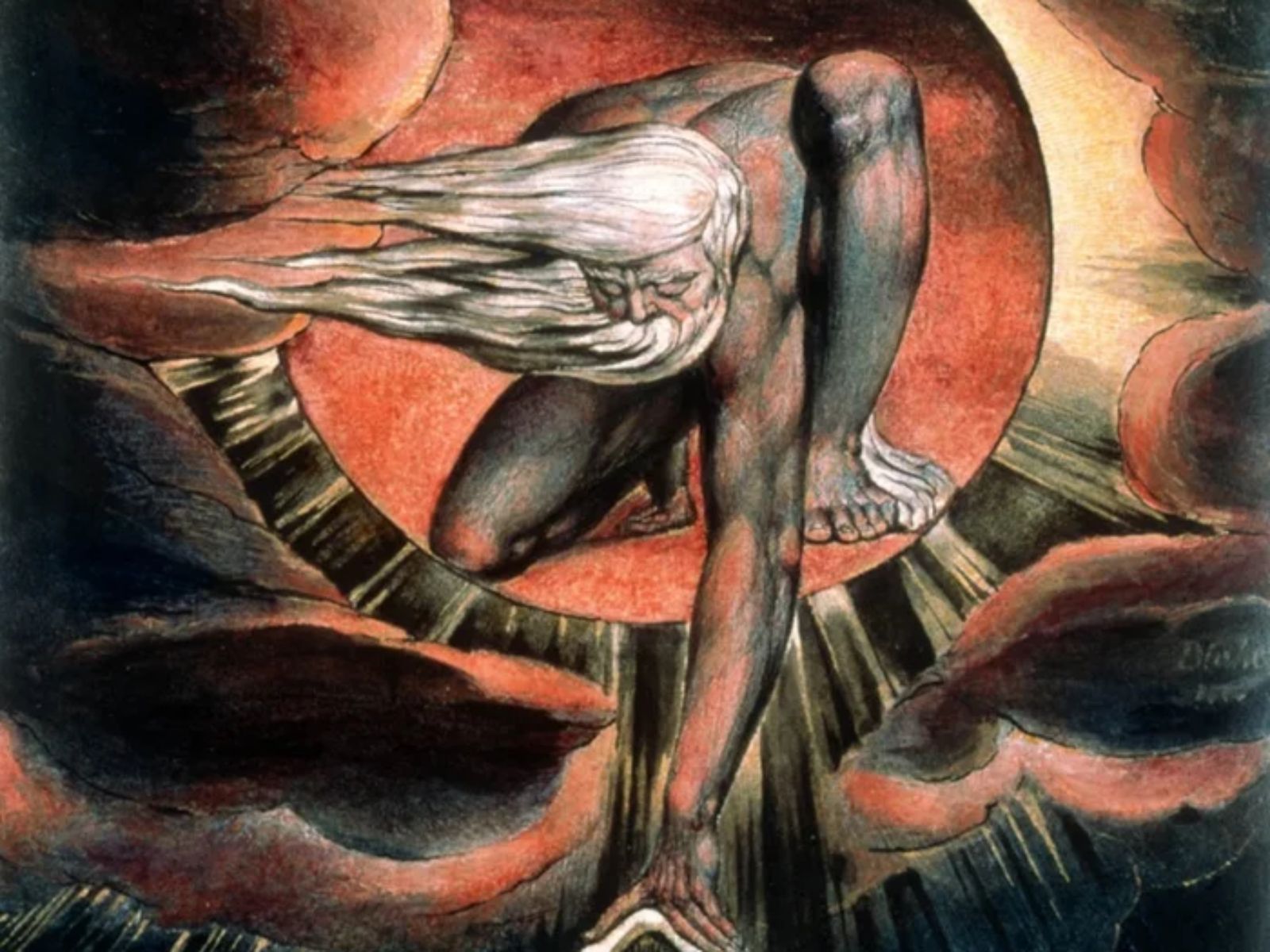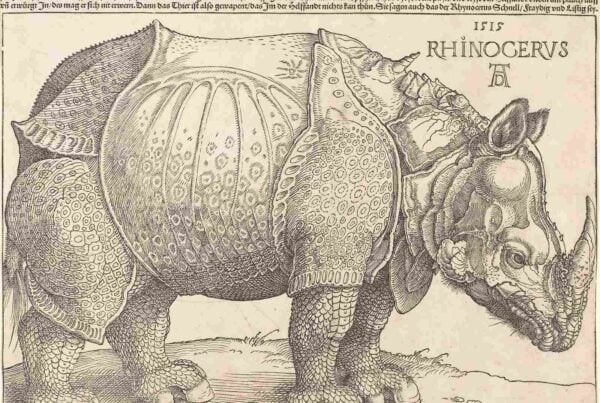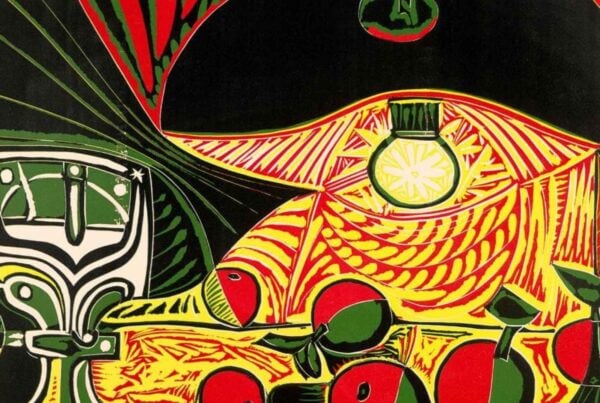William Blake was a British artist and poet who fused poetry with visual art. Born in 1757, his unique approach to combining text and image through relief etching and engraving set him apart from his contemporaries. Blake’s visionary illustrated books merged the literary and artistic worlds, creating a profound impact on both fields.
Throughout his life, Blake crafted an individual style that expressed his imaginative worldviews. His techniques in relief etching allowed him to produce detailed and intricate artworks that accompanied his poetry, making each piece a comprehensive blend of visual and verbal storytelling. Blake was largely unrecognised during his lifetime, but his ingenuity would later be celebrated as a significant contribution to art and literature.
The influence of Blake’s work resonates today, as his methods and themes continue to inspire artists and writers alike. Despite his initial obscurity, he is now seen as a pioneering figure whose legacy endures through his groundbreaking illustrated books.
Table of Contents
Key Takeaways
- William Blake combined poetry and art through innovative relief etching.
- His works blended text and imagery in visionary illustrated books.
- Blake’s influence extends into both modern art and literature.
Life and Artistic Journey of William Blake
William Blake‘s life was marked by a unique blend of mystical visions and vivid imagination. His artistic journey began in the bustling environment of London, leading him to become a visionary figure in the worlds of poetry and art.
Early Life and Apprenticeship
Born in London in 1757, William Blake grew up in a modest family with strong religious beliefs. His early talent for drawing was recognized, leading him to study at Henry Pars’s drawing school. By age 14, he was apprenticed to engraver James Basire, where he learned techniques that would later define his unique style.
Blake spent long hours perfecting his craft. His apprenticeship introduced him to Gothic art and architecture. These influences nurtured his imaginative thinking and inspired his future works. The rigorous training laid the foundation for his skill in etching and engraving, setting him apart as both a poet and an artist.
Marriage to Catherine Boucher and Felpham Period
In 1782, Blake married Catherine Boucher, who became a crucial supporter of his art and personal life. She assisted him with colouring prints and engravings, helping bring his visionary ideas to life. Their partnership was vital for Blake’s emotional and creative stability.
In 1800, Blake moved to Felpham in Sussex, seeking inspiration from the countryside. This period marked a significant phase in his work, as he completed notable pieces that fused poetry with intricate artwork. Living in Felpham allowed Blake to explore new artistic horizons, but it also brought personal challenges and economic struggles.
Later Years and Death
Returning to London in 1803, Blake faced financial difficulties but remained committed to his artistic vision. Despite being often misunderstood, he continued creating ambitious projects. His later years were marked by a deepening of his mystical and visionary themes.
Blake died in 1827 in London, largely unrecognised during his lifetime. Today, he is celebrated as a master of engraving and a mystic visionary whose works have left a lasting impact on both art and literature. His death did not diminish his influence; instead, his legacy has grown, acknowledging his contributions to the Romantic Age and beyond.
Blake’s Distinct Art Techniques
William Blake utilised unique art techniques, particularly in engraving and relief etching, that set him apart from his contemporaries. His approach combined text and image to create visionary works that are still admired today.
Innovation in Relief Etching
Blake developed an innovative method called relief etching to create his illuminated books. Unlike traditional etching, where the design is etched into the plate, he etched around the design, leaving the letters and illustrations raised. This allowed him to print his work like a relief, combining both text and illustrations on the same page seamlessly.
He also applied vibrant colours using watercolours and tempera. The use of these paints gave his works a unique vibrancy, allowing them to stand apart in texture and tone. The fusion of colours with his relief technique created a distinct visual experience. His process involved careful calibration to ensure cohesion between the visual elements and text, producing books that conveyed narrative and imagery fluidly.
Engraving and the Fusion of Visual Arts
As an engraver, Blake’s techniques were a mixture of traditional and experimental methods. He embraced line engraving, a detailed process that required precision, which resulted in intricate linear patterns throughout his works. These patterns set the foundation for his illustrations, lending a detailed, almost hypnotic effect.
Blake’s use of watercolour over engravings added depth and vibrancy, a testament to his ability to blend various media. His skill as an engraver and as a painter was evident in this fusion, as he harmonised these techniques to express profound visionary themes. This approach allowed Blake to push the boundaries of visual arts, intertwining narrative, colour, and line with striking effectiveness.
Illustrated Books and Poetry
William Blake combined poetry with visual art to create unique illustrated books that deeply influenced the Romantic Age. His works often intertwined themes of innocence, love, and symbolism, presenting visionary narratives through both text and image.
Poetical Sketches and Early Works
Blake’s early work, Poetical Sketches, introduced his talent as a poet and illustrator. Published in 1783, it contained both poetry and prose. This collection showed early signs of his mystical and symbolic style, albeit in a more traditional form.
His early entries served as a prelude to his later, more radical creations. The incorporation of themes like love, innocence, and angels began appearing here, which he would continue to explore throughout his career. His initial approach to combining text and imagery laid the groundwork for his later innovations in relief etching.
The Marriage of Heaven and Hell and Later Epics
In The Marriage of Heaven and Hell, Blake challenged conventional religious and moral ideas. This work, produced from 1790-1793, was notable for its use of relief etching, a technique Blake pioneered to integrate his visionary poetry with vivid illustrations.
He used symbolism brilliantly to explore profound philosophical themes. This medium allowed him to embed poetry within his intricate designs, making the visuals an integral narrative component. The First Book of Urizen, part of his later epic works, used a similar style, delving into themes of creation and existential conflict.
Songs of Innocence and Experience
The duality of Songs of Innocence and Experience is among Blake’s most celebrated achievements. Published in 1789 and later expanded, these illustrated collections contrast the purity of innocence with the harshness of experience.
Innocence is depicted through simple yet evocative poems and gentle illustrations. Conversely, Experience presents darker images and themes, reflecting societal and individual conflicts. This work effectively uses symbolism to convey deep emotional and philosophical messages. Blake’s ability to juxtapose contrasting themes using both text and images exemplified his unique approach to art and poetry.
Cultural and Historical Context
William Blake’s work must be seen against the backdrop of immense cultural and historical change. His artistic and poetic endeavours were influenced by significant movements like the Enlightenment and revolutions, as well as his deep engagement with religion and mysticism.
Influence of the Enlightenment and Revolutions
William Blake lived through a time when Europe was experiencing dramatic shifts due to the Enlightenment and revolutionary movements. These changes inspired his critical view of contemporary society.
The Age of Enlightenment prioritised reason and science. Blake, however, stood against this rationalism by championing the imagination and spirituality. The French Revolution, which began in 1789, and the American Revolution were particularly influential. His works display a sympathy for revolutionary ideals and a disdain for tyranny and oppression.
Blake admired figures like Thomas Paine, who advocated for social reform and the rights of the common man. Paine’s ideas found echoes in Blake’s poetry, where themes of freedom and equality were paramount.
Religion and Mysticism
Blake’s relationship with religion was complex. While he was critical of organised entities such as the Church of England, he was deeply spiritual. His work often incorporated mystical elements, echoing influences from thinkers like Emanuel Swedenborg. Swedenborg’s visions and writings about the spiritual world resonated with Blake.
He viewed visions as a critical part of life and saw himself as a visionary artist. His personal beliefs blended religion, sex, and death, creating a unique spiritual perspective. While he thought sex was not a sin, he saw societal corruption as a major issue. Through his art and poetry, he explored the deeper meanings of life and spirituality, often drawing upon religious and mystical themes.
Legacy and Influences
William Blake’s work has had a lasting impact on art and literature. His unique fusion of poetry and visual art through techniques like relief etching laid the groundwork for future generations. His visionary approach inspired many subsequent artists and movements.
Impact on the Pre-Raphaelites and Modern Art
Blake’s creativity and unique style greatly influenced the Pre-Raphaelites, who admired his idiosyncratic views and expressiveness. Artists like Samuel Palmer and Edward Calvert found inspiration in his visionary works. The Pre-Raphaelites appreciated his integration of text and image, often seen in works such as “Night Thoughts” and “Job.”
In Modern Art, Blake’s influence continued with artists exploring themes similar to his. His ability to convey profound ideas through symbolic imagery resonated with many. Blake’s “Visionary Heads” remained a testament to his pioneering spirit, encouraging artists to explore personal vision beyond conventional boundaries. His legacy of merging art and literature set a precedent for multi-disciplinary expression.
Revival and Recognition in the 20th Century
Despite limited recognition during his lifetime, the 20th century saw a revival of interest in Blake’s work. Critics and scholars reassessed his contributions, acknowledging his innovative techniques. His “prophetic books” gained attention for their complex symbolism and were studied for their expressive and imaginative depth.
Blake’s influence spread beyond the literary world, impacting broader cultural and artistic spheres. Institutions celebrated his work, and his engravings and poetry became essential studies in Romanticism. This newfound recognition affirmed his status as a seminal figure. Efforts to preserve and analyze his work underscored its ongoing importance in both historical and contemporary contexts, securing his place in the annals of artistic history.
Frequently Asked Questions
William Blake’s work is noted for its profound themes and rich symbolism, blending poetry with visual art. His influence on the Romantic era and his use of mysticism have continued to captivate audiences.
What themes are prominent in William Blake’s poetry?
Blake’s poetry often explores themes like innocence and experience, spirituality, imagination, and freedom. He also delved into societal issues, critiquing the political and social environment of his time.
How did William Blake’s work influence the Romantic era?
Blake, with his unique fusion of art and poetry, played a critical role in shaping the Romantic era. His emphasis on emotion and imagination inspired other Romantic poets and artists to explore similar themes.
Which notable figures did William Blake depict through his engravings?
Blake’s engravings featured historical and mythical figures. For example, he created a series on the Biblical story of Job and depicted characters like Adam and Eve in his artwork.
What role does mysticism play within the works of William Blake?
Mysticism is a central element in Blake’s works, where he often intertwined mystical visions with his poetry and art. His belief in spiritual revelation and nonconformist religious views shaped his creations.
How does William Blake’s art complement his written poetry?
Blake’s art and poetry complemented each other by visually representing his poetic themes. He used illustrations to bring to life his written words, making his books a unique blend of visual and literary art.
What are some of the key symbols used by William Blake in his illustrations and writings?
Blake frequently used symbols such as lambs, tigers, and angels. These symbols were used to explore themes of innocence, experience, and spirituality. His use of light and dark further emphasized his exploration of human nature.








